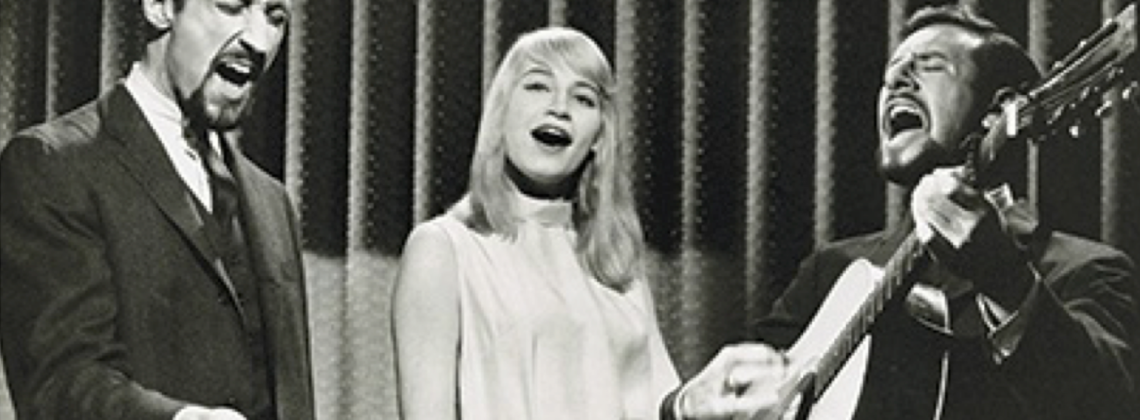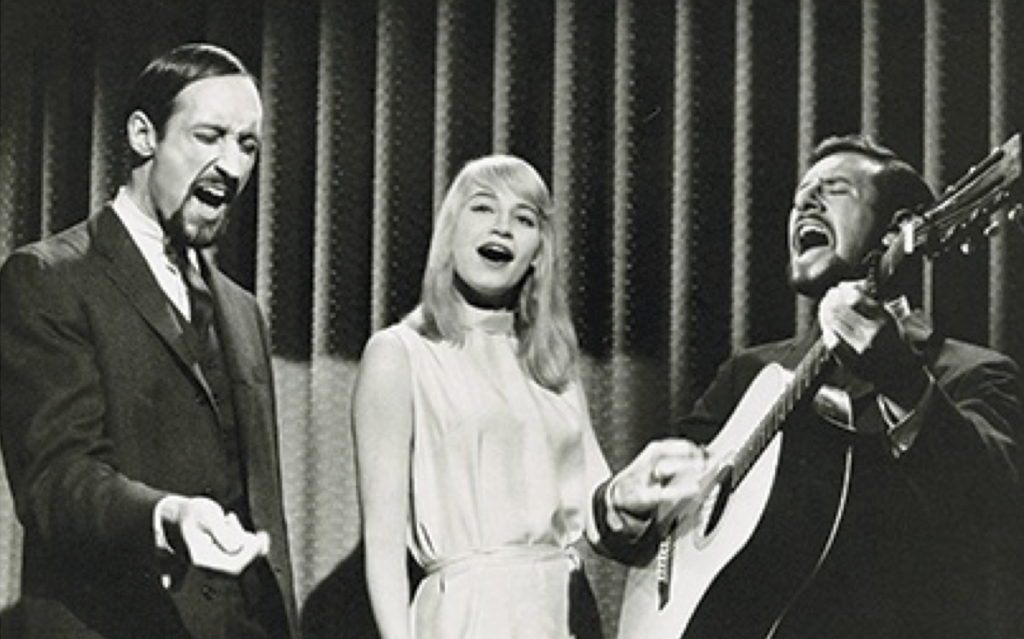

Timothy Snyder’s thin take on freedom reflects larger, more troubling deficits
On Freedom by Timothy Snyder. Crown Publishing. 2024. 368 pp., $32.00
The late folk singer Harry Chapin used to mock his own 1960s protest songs. The message of these songs was: “If only the world were as truly wonderful as I am, there would be no problems.”
Extend Chapin’s idea to a book length treatment, and you have Timothy Snyder’s On Freedom. This is deeply disappointing, especially coming from the well-regarded scholar and Richard C. Levin Professor of History at Yale University. Our times cry out for a thoughtful examination of freedom. This book is not it.
Like a folk singer performing live, Snyder spends more time talking about his songs than singing them. His book is full of anecdotes, personal reminiscences, tales from his childhood, and so many trite musings that one wonders when he’ll get around to talking about freedom. It says a lot about On Freedom that I learned more about Snyder’s youth baseball career than I did about freedom.
The book is loosely formed around Isaiah Berlin’s famous distinction between negative and positive liberty—although, strangely, Berlin is never mentioned. Snyder uses the term freedom rather than liberty. Still, the distinction between negative and positive freedom might have been fruitful. St. Augustine posited freedom as not merely the absence of restraint but the ability to live in the truth. Snyder seems vaguely aware of this positive aspect of freedom, and he wishes to critique the more libertarian takes on freedom that stress individual liberty and freedom from rather than freedom for. Sadly, this argument, which contains elements of fruitful thought, quickly turns into a hackneyed screed.
Reading this book, one wonders if everything Snyder learned about libertarian or right-of-center thinking came from watching MSNBC. For Snyder there are only two kinds of people: Those who believe in “positive freedom” (such as himself) and totalitarians. Oddly, given how many times Snyder references Communists and Nazis, he seems to have a dire picture of limited government. He claims, “America has become a flawed republic threatened by oligarchy and fascism for many reasons, but negative freedom is among them.”
Please, spare us from the tyranny of being left alone! Snyder equates those who question climate science to Hitler: “Our future, if we proceed through the politics of catastrophe, looks ever more like Hitler’s dark fantasy of ecological war. . . . Unlike Hitler, some of the fossil oligarchs who sponsor this lie are motivated by the desire for profit.” Further, he makes a distinction between the German words leib and körper, the former meaning vibrant life, the latter meaning simply our physical bodies: “It is a Leib that is capable of the kind of concentration that marks a free and sovereign person. Körper we concentrate in a camp.” Get it? Concentrate. Camp. Subtle.
The calumnies persist. He buys hook, line, and sinker the debunked notion that Russia manipulated the 2016 election and hoodwinked “huge numbers of Americans.” True, Russia spent small amounts of money on ridiculous social media posts that were seen by few. That’s bad, but the notion that “huge numbers” of Americans were influenced by Russian meddling is false. It is telling that Snyder offers no citation for this claim.
Likewise, he defames Elon Musk, calling him Putin’s puppet. Again, no citations. I have no particular fondness for Musk, but he did not purchase Twitter until late 2022, well after the 2020 election and after the Russian invasion of Ukraine. This line of argumentation is indicative of the book’s failures. To read Snyder you would never know that the Obama administration was aggressively pro-Russian for the first seven years of its existence.
It was, in fact, Obama who early in his administration placated Russia by pulling out of a missile deal with Poland. To add insult to injury, the policy change was announced on the seventieth anniversary of the Russian invasion of Poland—an obvious insult to the Poles. It was Obama who was caught on a hot mic telling Dmitri Medvedev, Putin’s toady, that after the 2012 election Obama would have “more flexibility” with Russia. Obama certainly didn’t mean he was going to be harder on Russia. In the same election, Obama mocked Mitt Romney for saying Russia was America’s primary international foe. In his second term Obama refused to enforce his own “red line” against Syrian use of chemical weapons on its own people and ceded Syria policy to Russia. Finally, it was Obama who bent over backwards to make a nuclear deal with Iran, a Russian client. Walter Russell Mead, hardly a Trump stooge, argued convincingly that Trump policy (as opposed to foolish Trump rhetoric) was far more antagonistic to Putin than anything Obama ever did.
An honest scholar notes these things. But Snyder is more interested in griding axes than in expanding his readers’ appreciation of freedom or giving them full context on complicated matters.
Snyder consistently rails against the “oligarchs,” including Donald Trump, the “oligarchic candidate” of 2016. I have no love for Donald Trump. Still, we might ask, if Trump was the oligarchy’s candidate, why did Hillary Clinton receive, according to Open Secrets, $117 million from the Finance/Insurance/Real Estate sector, while Trump got $37 million? Trump didn’t even raise as much from the oligarchs as Jeb Bush. 2020 was no different. Biden raised $252 million from that economic sector, while Trump raised $103 million. Snyder has bought into what may be the biggest myth in American politics—that big business hates big government. In reality, big business loves big government because it squeezes out competition and allows for easier rent seeking.
In his efforts to paint libertarians and other limited government proponents as advocates of a “repressive idea,” Snyder must torture history and numbers. He writes, “If freedom is negative, then politics becomes the practical work of clearing away the junk of the past: in the jargon of the 1980s and 1990s: deregulation, privatization, welfare reform.” What world does he live in? From the mid-1980s until 2000, the Federal Register of regulations grew by about 20,000 pages. Our era of “negative freedom” has seen the federal budget balloon from roughly $1 trillion in the mid-1980s to over $6 trillion today (down from a COVID-era high of over $7 trillion in annual spending). This is not some cheap, parsimonious, governing regime.
The same is true with taxes. He writes, “A relaxation of taxes on the rich placed burdens on everyone else. The explicit rationale was negative freedom: President Ronald Reagan maintained that government can never help, only hurt.” Ronald Reagan never said that. Once again—as is common throughout the book—Snyder makes a wild claim with no citation.
It isn’t as though there is no evidence for Snyder’s assertions or that the policies for which he advocates are uniformly bad. Rather, he’s oblivious to any counter argument. It never occurs to him that the income stagnation he decries follows the rise of the Great Society in the 1960s and 1970s. Does that mean that the stagnation was caused by that phenomenon? Not necessarily. But a thoughtful writer considers it. Snyder bemoans the high incarceration rate in the United States. Fair argument. But perhaps he should note that crime in America exploded in the 1960s and remained high until the mid-1990s, when America adopted the policy of heightened incarceration. At that point crime began a twenty-five-year decline. Are those related? Maybe. Maybe not. I think demographics had a lot to do with the decline in crime (i.e., the Boomers aged out of their prime crime years). But, again, a thoughtful book considers this alternative.
But this is not a thoughtful book. Snyder does not bother asking whether high incarceration and low crime are related—or whether living in a crime-ridden area might be unconducive to freedom. Ask anyone who lived in New York City in the 1970s how free they felt then as compared to today.
The problem is that Snyder makes wild, highly contestable claims while sneering at anyone with whom he disagrees. He seems completely unaware of any argument or scholarship from the center-right. He is blissfully unaware that there is a lively debate on the right over the compatibility of a negative view of government action and an aggressive defense of the free market with a good society.
Throughout the book I kept thinking of other thinkers who had more thoughtfully addressed Snyder’s claims. Examples include Matthrew Crawford’s account of sovereignty in The World Beyond Your Head, Alasdair MacIntyre’s critique of the unencumbered self in After Virtue, and the economist Hernando De Soto’s discussion of government and the ability to legally purchase property in The Mystery of Capital. Snyder himself appears to be deeply influenced by Simone Weil. Readers would benefit so much more from reading Weil’s The Need for Roots than On Freedom. Finally, I recently reviewed Yuval Levin’s book American Covenant. Reading Levin’s book, someone who dissents from his argument will find himself challenged. Anyone disagreeing with Snyder while reading his book will find himself insulted and belittled. There is a 2,500 year intellectual tradition of deep thought on the subject of freedom. Snyder ignores that tradition in favor of fighting today’s partisan fights.
Toward the end of the book, Snyder criticizes those who “draw us into a politics of ‘us and them,’” because “If we accept single value, we feel that we are always right, because we think we are saying the right things with the right people.” He should heed his own advice.
Jon D. Schaff of Professor of Political Science at Northern State University in Aberdeen, South Dakota. He’s the author of Abraham Lincoln’s Statesmanship and the Limits of Liberal Democracy and co-author of Age of Anxiety: Meaning, Identity, and Politics in 21st Century Film and Literature.
Image: Peter Yarrow, Paul Stookey and Mary Travers, Wikimedia Commons